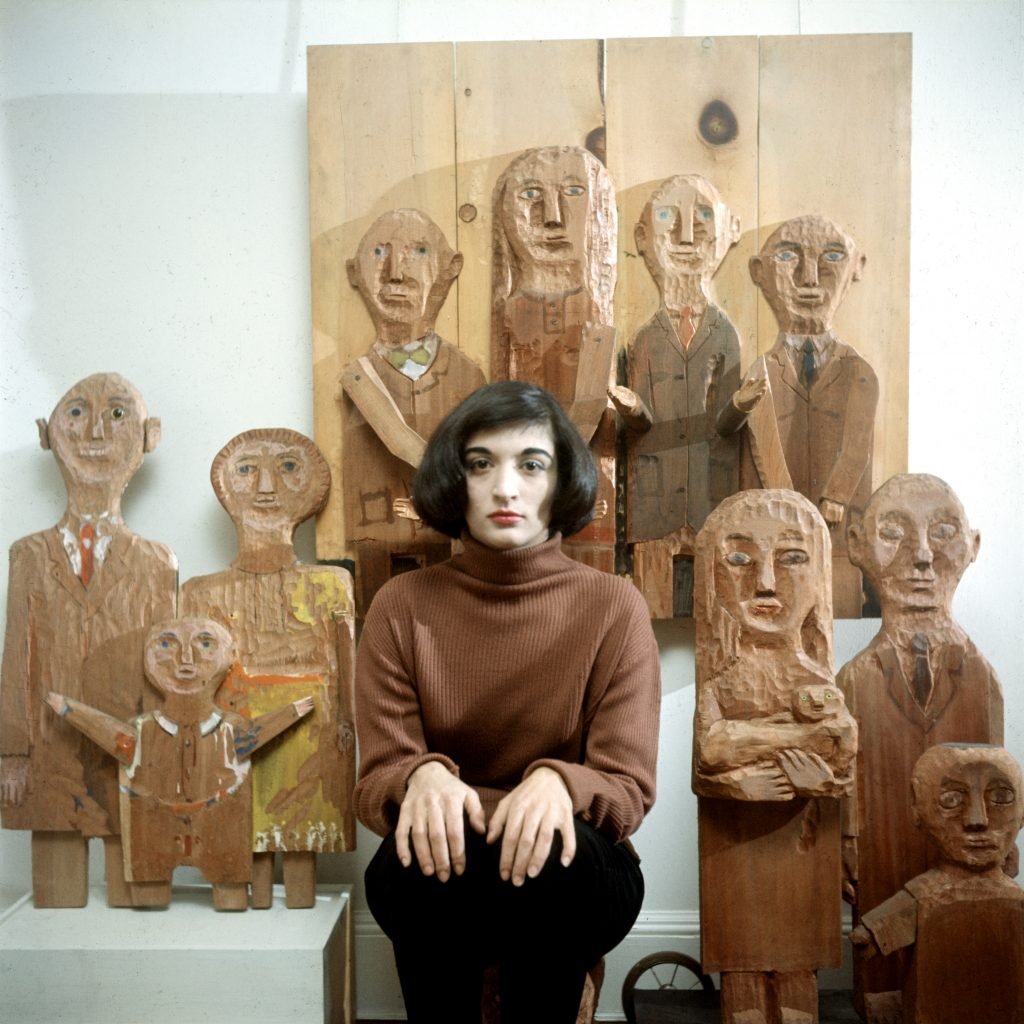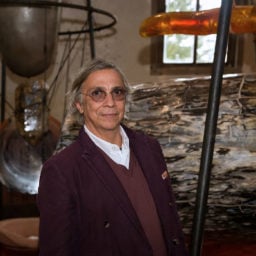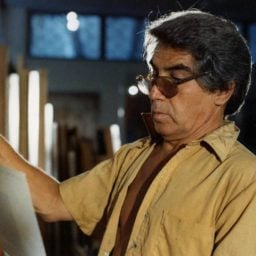

Artist Marisol Escobar passed away on Saturday, April 30. Friend and fellow Venezuelan artist Rolando Peńa broke the news on his Facebook page, expressing his loss over the “undisputed queen of pop art.”
Escobar was born in Paris to Venezuelan parents, though it would be in New York City that the artist found her home and purpose. From 1950 onward, stars aligned for Escobar as she navigated the art world of her moment: a tutelage under Abstract Expressionist master Hans Hofmann; nights at the Cedar Tavern that introduced her to art stars like Willem de Kooning; and a fruitful friendship with Andy Warhol. She even appeared in two of his films from the 1960s, including The Kiss, and the Screen Test 13 Most Beautiful Women.
Throughout her career, Escobar’s interest in pre-Columbian artifacts set her apart from the art movements that surrounded her in New York, though she was often associated with the burgeoning pop art scene of the 1960s. But when asked if she identified as a pop artist in a 1968 interview with Colette Roberts for the Archives of American Art, the artist carefully mused, “maybe its better not to.”
In 1951, Escobar abandoned painting and embraced sculpture. As always, she forged her own path. An example of her unique approach to art-making is The Cocktail Party (in 15 parts), which was completed between 1965-1966, and sold for $912,000 at Sotheby’s New York in 2005.
The large-scale work, which features 15 free-standing, elaborately-designed figures, was crafted using a combination of photography, woodcarving, plaster-casting, painting, and collage. “When I first sculpted those big figures, I would look at them and they would scare me,” Marisol said in 1972. “Late at night they looked as if they were alive.”
Later on in life, Escobar began to garner more attention for her work. In 2004, the Museum of Modern Art launched a cross-generational exhibition which included her work, as well as that of contemporaries León Ferrari and Gego (Gertrud Goldschmidt). The show, “MoMA at El Museo,” surveyed notable works from the museum’s Latin American and Caribbean collection. Ten years later, the artist was honored with her first solo show in New York, at the Museo del Barrio.







